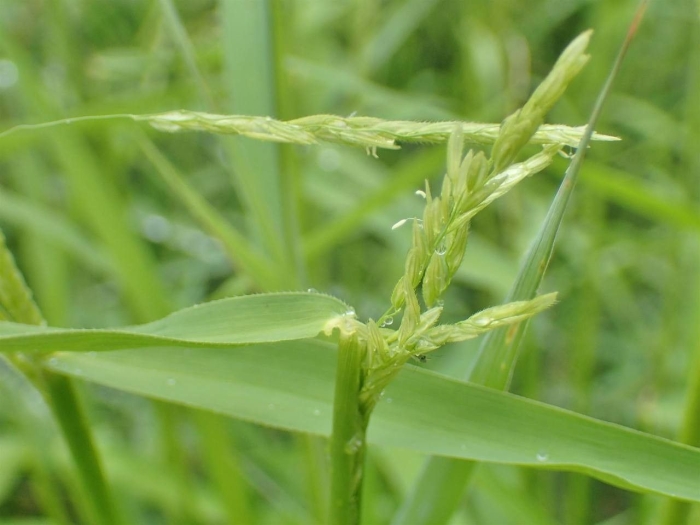Rice Cutgrass
(Leersia oryzoides)
Rice Cutgrass (Leersia oryzoides)
/
/

Yoan MARTIN
CC BY-SA 4.0
Image By:
Yoan MARTIN
Recorded By:
Copyright:
CC BY-SA 4.0
Copyright Notice:
Photo by: Yoan MARTIN | License Type: CC BY-SA 4.0 | License URL: https://creativecommons.org/licenses/by-sa/4.0/ | Attribution: Yoan MARTIN (cc-by-sa) | Rights Holder: Yoan MARTIN | Publisher: PlantNet | Date Created: 2017-08-10T22:00Z | Title: Leersia oryzoides (L.) Sw.: habit | Notes: |





































































Estimated Native Range
Summary
Leersia oryzoides, commonly known as Rice Cutgrass or simply Cut-grass, is a rhizomatous perennial grass that thrives in wetland habitats, including marshes, wet meadows, and the edges of ponds and streams. It is native to Europe, Asia, and North America, and has been introduced to regions such as Australia. Rice Cutgrass typically grows to a height of 1 to 1.5 meters, with leaves up to 28 centimeters long featuring very rough, minutely toothed edges that can cause skin irritation upon contact. The inflorescence is a loose, open array of wavy, hairlike branches with rows of spikelets that are not particularly showy but are interesting in their delicate structure.
Rice Cutgrass is valued for its utility in erosion control and wetland restoration due to its dense rhizomatous root system that stabilizes soil. It is also used in naturalized plantings and wildlife gardens, where it provides habitat and food for various species. In cultivation, it requires full sun to part shade and can tolerate a wide range of water conditions, from high to occasionally dry, making it suitable for rain gardens and riparian plantings. It adapts to soils with varying drainage capabilities, from fast to slow. While not commonly afflicted by diseases, its aggressive growth can make it invasive in some settings, so it should be managed carefully to prevent unwanted spread.CC BY-SA 4.0
Rice Cutgrass is valued for its utility in erosion control and wetland restoration due to its dense rhizomatous root system that stabilizes soil. It is also used in naturalized plantings and wildlife gardens, where it provides habitat and food for various species. In cultivation, it requires full sun to part shade and can tolerate a wide range of water conditions, from high to occasionally dry, making it suitable for rain gardens and riparian plantings. It adapts to soils with varying drainage capabilities, from fast to slow. While not commonly afflicted by diseases, its aggressive growth can make it invasive in some settings, so it should be managed carefully to prevent unwanted spread.CC BY-SA 4.0
Plant Description
- Plant Type: Grass
- Height: 2-4 feet
- Width: 0.5-1 feet
- Growth Rate: Moderate
- Flower Color: N/A
- Flowering Season: Summer, Fall
- Leaf Retention: Deciduous
Growth Requirements
- Sun: Full Sun, Part Shade
- Water: High
- Drainage: Fast, Medium, Slow
Common Uses
Bird Garden, Butterfly Garden, Deer Resistant, Erosion Control, Water Garden
Natural Habitat
Native to wetland habitats, including marshes, wet meadows, and the edges of ponds and streams
Other Names
Common Names: Cut-Grass, Cutgrass, Ricegrass, Risgræs, Wilder Reis, Europäische Reisquecke, Faux-Riz, Léersie Faux-Riz, Léersie À Fleurs De Riz, Rijstgras
Scientific Names: , Leersia oryzoides, Leersia oryzoides var. oryzoides, Oryza clandestina, Phalaris oryzoides, Leersia oryzoides var. patens, Leersia oryzoides f. inclusa, Leersia oryzoides var. inclusa, Homalocenchrus oryzoides, Leersia oryzoides f. glabra
GBIF Accepted Name: Leersia oryzoides (L.) Sw.